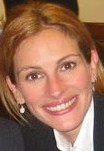In 1992 I wrote an article for the New York Times on body doubles—the performers in movies who substitute for stars who aren’t quite buff enough for close-ups or brave enough for nudity. I cited several examples of stars who have used body doubles, including Kim Basinger in My Stepmother Is An Alien and Julia Roberts in Pretty Woman. A few weeks later I received a letter at my home address from an admirer of Ms. Roberts. He informed me that because I had impugned her artistry, my family should suffer. I contacted the Times’ security department, which contacted the authorities where this fan lived. The Times then assured me that I needn’t give the episode another thought.
But I do think of it from time to time, when I talk or write about some of the wilder, yet apparently true, concepts in cosmology. During my visit to Antarctica to research a book a few years ago, a National Science Foundation liaison liked to take me around to tables in the McMurdo Station cafeteria at breakfast and introduce me to the non-scientists who worked there. She wanted them to hear this jaw-dropping idea I’d described to her: that the universe consists of 73 percent dark energy and 23 percent dark matter, leaving only 4 percent the stuff we’d always assumed, from the dawn of civilization to the final quarter of the twentieth century, was the universe in its entirety—galaxies, stars, planets, people.
“Sounds like God to me,” one person answered, in a baiting tone. The next morning the response at another table was even more antagonistic: “Why should I believe you?”
Stunt doubles don’t seem to threaten people. Nor do dance doubles. The movie star can’t tumble out of a careening car or triple-somersault down Broadway? Of course not! Who would expect him to?
But the movie star who isn’t ready for her close-up—clothed or not—somehow seems a betrayal of the suspension of disbelief. Her threat isn’t that she can’t do something that few people can do—something beyond what we might reasonably expect her to do, something for which we’re willing to suspend our disbelief in order to remain engaged in the fantasy. It’s that she isn’t what she appears to be—something for which we didn’t even know there exists a disbelief to suspend.
“People want to think, ‘This is Julia Roberts,’ or ‘This is Kim Basinger,’” an agent for body doubles told me. “They don’t want, ‘Oh my God, that’s all lies.'”
People want to think, “The Sun goes around the Earth,” or “The Universe is made entirely of good old regular matter.” I understand the impulse. My first book on science was a history of the telescope, through a philosophy-of-science sort of lens (so to speak), and I was terrified to discover, late in the research process, that in the mid-twentieth century astronomers began looking at light beyond the visible part of the electromagnetic spectrum—the “invisible light” bands such as X-rays, radio waves, the infrared. Terrified, in part because I realized I suddenly had a whole lot more research to do, just when I thought I was winding down. But terrified, too, because I realized how potentially inadequate was my knowledge of astronomy—my approach to the acquisition of knowledge itself. I had made an assumption I didn’t realize I’d made: what you see is what you get.
Not that my reflexive response was, “It’s all lies.” It was more like, “Well, maybe invisible light isn’t that important.” Maybe it’s something I can easily incorporate into my unthinking prejudice for a strictly visible universe.
I dug into the literature. (This was pre-internet, at least in my household.) I looked at contemporary histories of astronomy. I bought a book called The New Astronomy, which chronicled what you could see in each of the non-optical parts of the spectrum. I realized that observations in non-optical light had led to evidence for black holes, quasars, pulsars. They had led to the discovery of the cosmic microwave background, the evidence that tipped theorists solidly toward the Big Bang interpretation of the universe. In short, they essentially had led to all the phenomena that have changed our interpretation of the universe from something benign and static to something violent and evolving. By the time I got to the musings of a radio astronomer that the invisible light revolution is “an experience comparable in its totality only with Galileo’s first sight of the night sky through a telescope,” I had resigned myself not just to the truth, but to the enormity of the truth.
Yeah, yeah, I know: Yay for me. But! That experience deepened my appreciation of just how inadequate the evidence of the senses can be. Which, when thinking about the universe, is a valuable lesson. It certainly fed the philosophical issues in that book (which was, after all, titled Seeing and Believing) as well as the conception for my next book (which would be titled The Invisible Century). But it also taught me to try to think of my assumptions, especially the unthinking ones, as possible barriers to the truth, and to see the truth not as a threat but as an opportunity to discover deeper truths.
Such as:
Sometimes what’s believable is an illusion. The Sun goes around the Earth; Julia Roberts is physically flawless. And sometimes what’s unbelievable is real. The Earth goes around the Sun, and the Sun is just one more star of a hundred billion in our galaxy, and there are far more than a hundred billion galaxies in the universe, and all those galaxies amount to 4 percent of what’s actually out there—stuff that’s not at all detectable, either in the visible or in the “invisible” parts of the electromag- netic spectrum.
And why should you believe me?
“You shouldn’t,” I answered the woman at the breakfast table in Antarctica. I’m not a scientist, I told her. But I was present over the past ten or twelve years, at formal presentations and informal Q&A’s at conferences, at discussions in hallways and over dinners, as scientists did what scientists should do when confronting new evidence, which is try to knock it down as best they can. And in this case, the harder they tried, the more compelling they found the evidence, until they finally threw up their hands and said, “Okay, okay—you win!”
The universe was ready for its close-up.
* * *
Top: http://www.house.gov/langevin/album/juliaroberts-may02.jpg; bottom: http://www.quotecounterquote.com/2011/03/you-cant-handle-truth-from-jack.html


For some reason, these thoughts make the little crap in life seem maybe not so big;-)